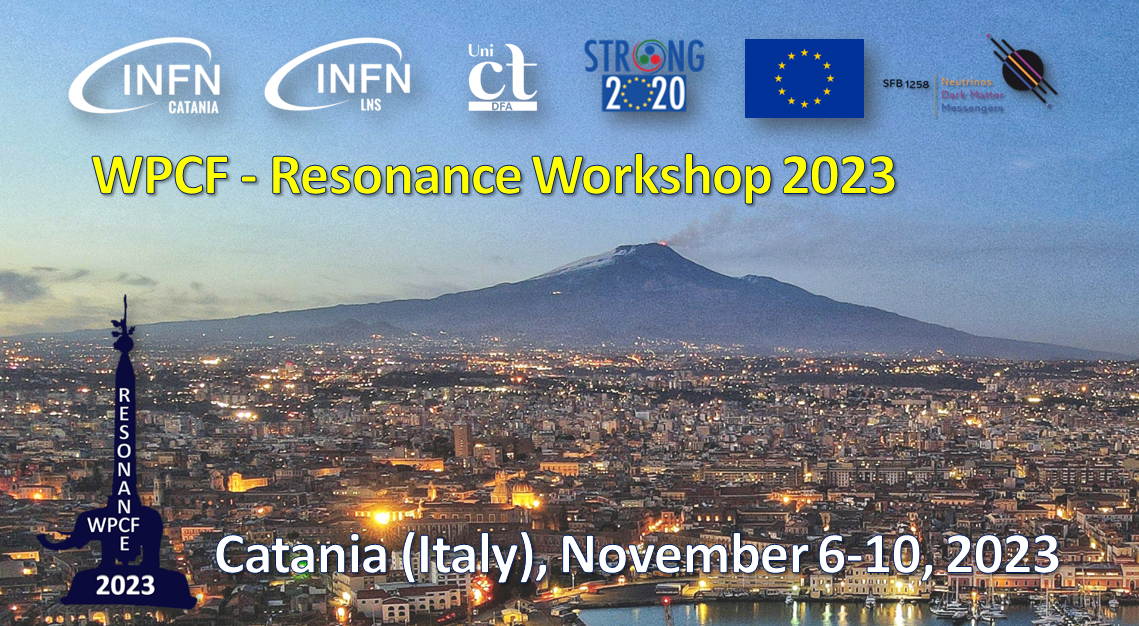Conveners
Day 2 - Afternoon: Session 7
- Paola La Rocca (Istituto Nazionale di Fisica Nucleare)
Day 2 - Afternoon: Session 8
- Francesca Bellini (Istituto Nazionale di Fisica Nucleare)
The dineutron is a hypothetical bound state of two neutrons in a nuclear medium and a spatially compact pair, different from the one realized by the BCS mechanism[1].The dineutron correlation is expected to appear in various circumstances, such as the surface of weakly bound neutron-rich systems and the inner crust of neutron stars. It has been studied using various approaches, such as the...
The search for chargeless nuclei consisting only of neutrons has been a long-lasting challenge in nuclear physics, dating more than six decades back (see Ref. [1] for a recent review). The tetraneutron, in particular, has attracted a lot of experimental and theoretical attention. Most models agree that nuclear forces cannot bind four neutrons together without destroying many of the other...
Pairing interactions play crucial roles in atomic nuclei and quantum many- body physics in general. In finite nuclei, two-neutron and/or two-proton pairing are responsible for the odd-even staggering observed in the binding energy of atomic masses and for the fact that all even nuclei have a J = 0+ ground state. Pairing correlations also imply a smoothing of the level occupancy around the...
The advent of new facilities for radioactive ion beams mainly rich in neutrons, SPES @ LNL, FRAISE @ LNS and FAIR @ GSI only to give some examples, imposes the joint detection and discrimination of neutrons and charged particles in heavy radioactive ion collisions, with high angular and energy resolutions. The construction of novel detection systems suitable for this experimental task is both...
The detection of neutrons and light-charged particles represents a crucial aspect in the future experiments with radioactive beams, provided by new heavy ion facilities, such as FRAISE at LNS, SPES at LNL, and FAIR at GSI.
The aim of the ANCHISE project is the development of a new detection system able to detect with high angular and energy resolution neutrons and light-charged particles at...
Hadron physics faces several challenges nowadays. On the one hand the field moves towards the search of exotic states beyond the predictions of the quark model, while on the other the detailed knowledge of the effective interaction among hadrons is still an open issue. The nature of the strong interaction between particles is also a fundamental problem in various areas of nuclear physics and...
The RHIC Beam Energy Scan (BES) program aims to study the properties of strongly interacting matter in relativistic heavy-ion collisions at various energy densities and temperatures. Correlation femtoscopy technique is a useful tool to study systems undergoing QCD phase transitions, and can extract valuable information about the size, shape, and lifetime of the particle-emitting source in...
We considered the two puzzle femtoscopic observations in ultrarelativistic heavy ion collisions. The first one is closeness of the observed maximal emission times of pions at the quite different collision energies: from top RHIC to top LHC energies. Another paradoxical effect is that despite the long enough duration of the post-hydro- dynamic/afterburner cascade stage, the observed times of...
The experimental observations of quark-gluon plasma signals in proton-proton and proton-nucleus collisions at RHIC and LHC energies has attracted a big interest in these small systems due to the possible formation of short-lived droplets of this deconfined state of strongly interacting matter. We study the effects of nonequilibrium dynamics in relativistic proton-nucleus collisions by...
We present the first studies of net-charge fluctuations and charge-balance functions using the broad rapidity coverage of the CMS experiment. These types of event-by-event fluctuations are a powerful tool to characterize the thermodynamic properties of the quark-gluon plasma (QGP). The net-charge of the system is a conserved quantity, meaning its fluctuations are sensitive to the QGP formation...
In the past years, evidence of anisotropic flow has been observed in small collision systems at the LHC; however, its precise origin remains unknown.
In this talk, we will present the measurements of correlations between different flow harmonics in pp and Pb--Pb collisions.
The measurement of the correlation between the mean transverse momentum and flow coefficients,...

